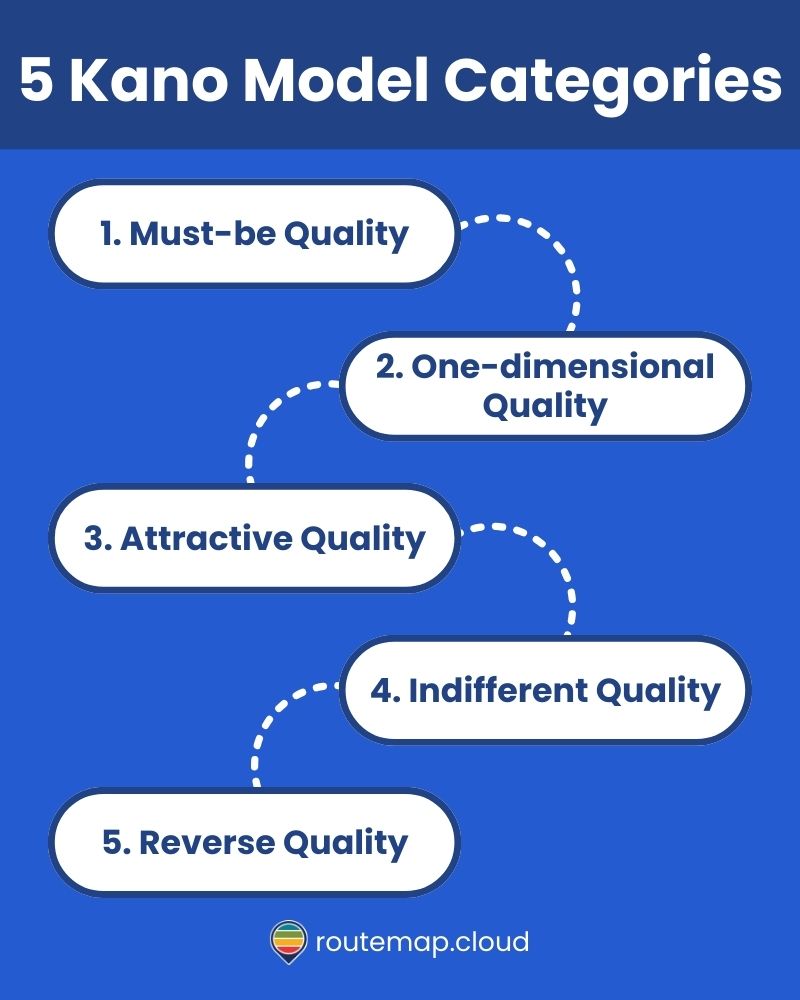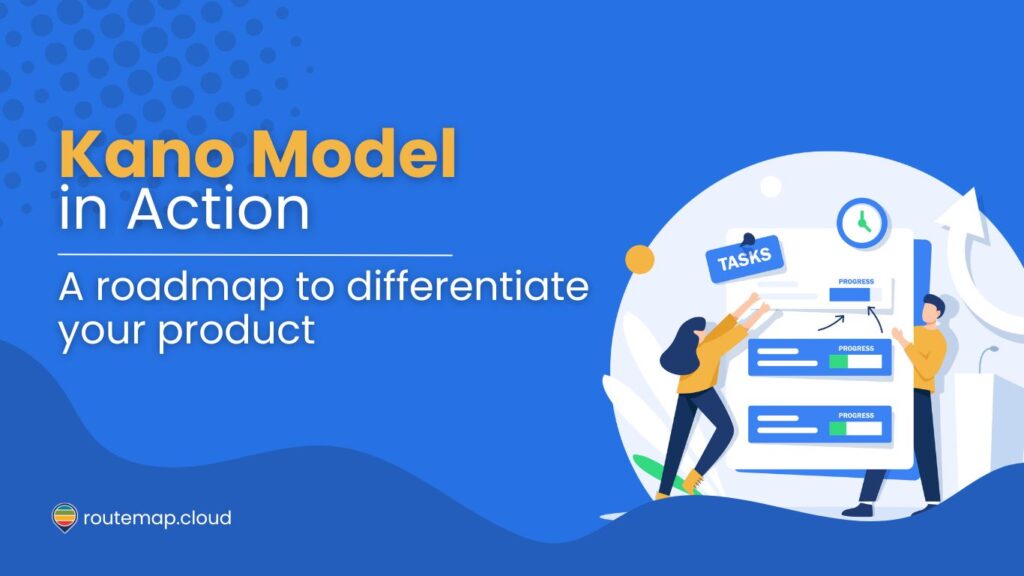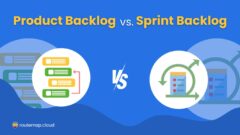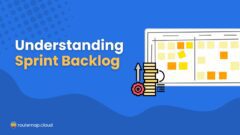It is necessary to stand out in today’s fiercely competitive market. Therefore, differentiation has become the backbone of success, where products must not only meet basic needs but also captivate and delight. That is where the Kano model comes in.
This prioritization framework offers a profound insight into customer satisfaction and a roadmap for product innovation. This article will guide you on the journey to how the Kano Model can help you distinguish your offerings and captivate your market.
What is the Kano model?
The Kano Model is a framework to analyze and categorize customer preferences regarding product features into five main categories. This prioritization framework helps businesses prioritize features based on how they affect customer satisfaction.
These categories are designed to guide product development and innovation strategies by understanding which features will satisfy or delight customers as well as those that could lead to dissatisfaction if not properly managed.
The history behind the Kano model
Professor Noriaki Kano, a Japanese researcher and consultant, first introduced this model as a theory of product development and customer satisfaction in the 1980s. His work was motivated by the desire to understand how different aspects of product quality could influence customer satisfaction in complex and nuanced ways.
Before the Kano Model, many businesses assumed that customer satisfaction was directly correlated with the performance of the product features. In other words, more is better.
However, Kano proposed that customers do not perceive all features equally and that satisfaction could be influenced by various types of quality attributes, which he categorized into the now-famous five categories: Must-be Quality, One-dimensional Quality, Attractive Quality, Indifferent Quality, and Reverse Quality.
Over the years, various industries have adopted and adapted the Kano Model, from technology and consumer electronics to services and healthcare. Moreover, it has influenced product development practices and broader business strategies focused on customer satisfaction and competitive differentiation.
Five main Kano model categories
As mentioned above, the Kano Model identifies five types of customer preferences or qualities. By following this framework, businesses can prioritize features based on their potential impact on customer satisfaction.

1. Must-be Quality (Basic needs)
These features are the basic requirements that customers expect to be present in a product or service. Their absence leads to dissatisfaction, but their presence only significantly increases customer satisfaction because they are taken for granted.
2. One-dimensional Quality (Performance needs)
These features are directly correlated with customer satisfaction. The better these features perform, the higher the customer satisfaction, and vice versa. They are typically the features that customers say they want.
3. Attractive Quality (Delighters)
These features provide satisfaction when present but do not cause dissatisfaction when absent. They are often unexpected by the customer and can significantly boost customer satisfaction and loyalty because they go beyond customers’ expectations.
4. Indifferent Quality
These features neither significantly increase nor decrease customer satisfaction. Customers do not particularly care whether these features are present or not.
5. Reverse Quality
These are features that customers may not want, meaning their presence could lead to dissatisfaction, and their absence might increase satisfaction. Preferences for these features can vary greatly among different customer segments.
How Kano model works
The Kano model is a way for businesses to figure out what makes their customers happy or unhappy about their products. It’s like sorting features into buckets to see which ones matter the most.
Here is how it works:
- Listen to customers: First up, find out what customers think by asking them directly through surveys or interviews. You want to know what they like, don’t like, and wish for in your product.
- Sort features: Take all the feedback and sort each feature of your product into one of five categories (which we already mentioned earlier).
- Decide what to focus on: With all the features sorted, you can figure out where to focus your efforts. Besides, it is crucial to ensure the essentials are solid, improve or add the performance boosters, and think about including some surprise benefits to wow customers.
- Keep it fresh: Remember, customer tastes change over time, so what they want today might be different tomorrow. Therefore, it is recommended to keep asking and adjusting your product to keep up with their changing preferences.
The Kano model and Agile development
Integrating the Kano model within Agile development processes offers a dynamic and customer-focused approach to product development. This integration ensures that products meet basic expectations and continuously evolve to delight customers while staying ahead in competitive markets.
Here is a deeper look into how the Kano model enhances Agile development.
1. Align customer satisfaction with product iterations
Agile development is characterized by short, iterative cycles (sprints) that focus on continuous improvement and adaptation based on feedback. The Kano model provides a structured framework for prioritizing which features to develop or improve based on their impact on customer satisfaction.
By categorizing features into Must-be, One-dimensional, and Attractive qualities, product teams can make informed decisions about where to focus their efforts in each sprint. Then, they can ensure that every iteration brings value to the customer.
2. Feedback loops and sprint planning
In Agile, feedback loops are essential for incorporating user feedback into future development cycles. Therefore, the Kano model enriches these feedback loops by offering a lens through which to view and analyze customer responses.
During sprint reviews and retrospectives, teams can categorize new insights into the Kano framework. From there, they can move on to decide whether features have met their expectations as Must-be, One-dimensional, or Attractive qualities and adjust their backlog priorities accordingly.
This methodical approach to feedback ensures that development efforts are always aligned with evolving customer desires.
3. Measure the impact on customer satisfaction
Agile methodologies also emphasize measuring progress and outcomes, and the Kano model provides specific criteria for assessing the impact on customer satisfaction. By identifying which category a new feature or improvement falls into before and after development, teams can predict more accurately and measure its impact on customer satisfaction.
Tools like customer satisfaction surveys or Net Promoter Scores (NPS). Additionally, user engagement metrics can be segmented by feature category to provide detailed insights into how different aspects of the product affect overall satisfaction.
4. Continuous evolution
Agile development thrives on change, with teams expected to pivot based on user feedback and changing market conditions. The Kano Model supports this by highlighting the fluid nature of customer preferences; what starts as an Attractive quality MAY become a Must-be over time.
Therefore, such awareness encourages teams to continuously revisit and reassess their feature categorizations. Besides, it also ensures that the product evolves in ways that consistently meet or exceed customer expectations.
5. Enhance product roadmaps
Integrating the Kano model with Agile development also impacts long-term product strategy and roadmap planning.
By understanding which features are currently delighting customers versus those that are merely expected, product managers can create flexible and advanced roadmaps. More importantly, these roadmaps can address immediate market needs and incorporate visionary elements that set the product apart.
In a nutshell, this strategic perspective ensures that the product remains both competitive and innovative.
6. Promote cross-functional collaboration
Finally, the Kano Model nurtures a shared understanding of customer priorities across the entire product team, including developers, designers, marketers, and sales professionals. This unified perspective is crucial in Agile environments, where cross-functional collaboration is key to delivering value quickly and efficiently.
When every team member understands the impact of their work on customer satisfaction, it enhances their commitment to the product’s success and encourages innovative thinking.
When should you use the Kano model?
The Kano Model can be particularly useful in various stages of product development and customer experience management.
- New product development: Use the Kano Model to identify features that will delight customers and prioritize development to meet basic expectations and enhance satisfaction.
- Product improvement: Evaluate user perceptions to inform decisions on adding, improving, or removing features to better meet customer needs.
- Customer experience strategy: Design engaging experiences by focusing on features that delight users, applying the model to both products and services.
- Market differentiation: Analyze competitors and position your product uniquely by emphasizing features identified as delighters or unmet needs.
- Resource allocation: Guide budgeting and planning by investing in features that significantly impact customer satisfaction.
- Customer feedback loops: Incorporate feedback for continuous improvement and use the model in agile development to adapt features based on customer preferences.
- Understanding market trends: Anticipate future must-haves and adjust your product strategy to stay ahead of market trends.
- Portfolio management: Evaluate and prioritize features across your product or service portfolio to focus on customer satisfaction.
Final thoughts
The Kano model serves as a powerful tool across the spectrum of product and service development, from the initial brainstorming phase to ongoing enhancements. Moreover, it shines a light on what truly matters to customers, distinguishing between must-have necessities and potential delighters to set a product apart.
By guiding strategic decisions around feature prioritization, resource allocation, and market positioning, this prioritization technique helps ensure that investments not only meet but exceed customer expectations.
Therefore, employing this model is a strategic move for any team aiming to build products that resonate deeply with users. Additionally, it can foster a loyal customer base and drive competitive differentiation in the market.




